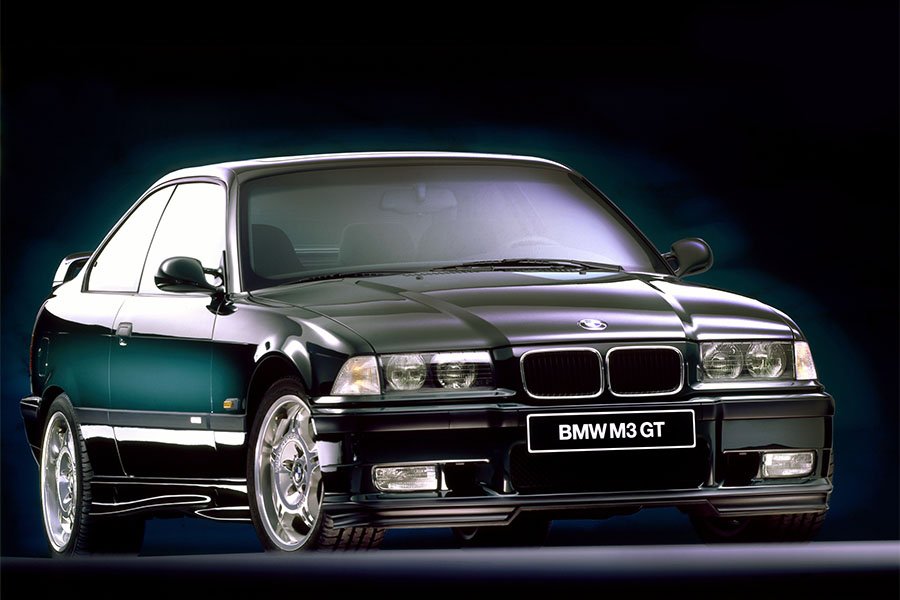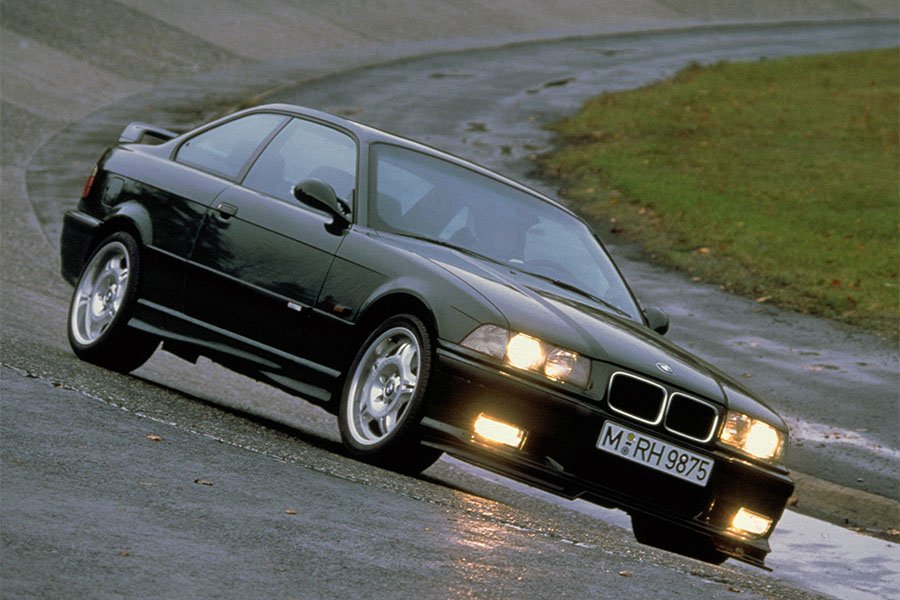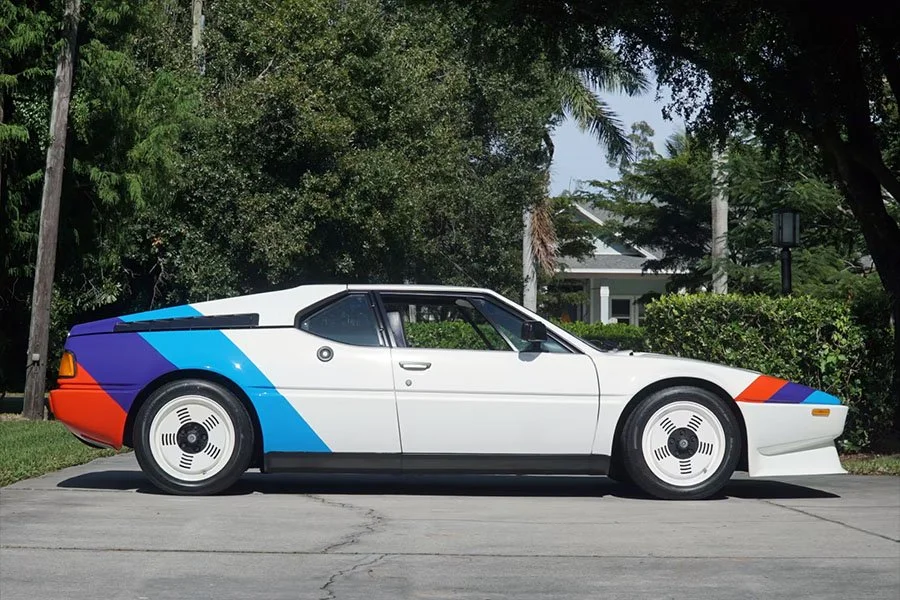Guide: BMW E36 M3 3.0 GT - a Historical & Technical Appraisal
/BACKGROUND
Although BMW had not conceived the E36 M3 with competition in mind, circumstances conspired that it unexpectedly became quite a success in GT racing.
Having been in the doldrums since the early 1980s, as a result of several connected factors, interest in GT racing exploded between 1992 and 1994.
After 40 unbroken seasons, the World Sportscar Championship collapsed shortly before the 1993 season was due to get underway. Group C cars were no longer eligible to compete and instead, participants had to run expensive normally aspirated 3.5-litre prototypes that were were effectively Formula 1 cars with fully enveloped bodies.
Under normal circumstances, the rule change may have succeeded. However, at the time, most major economies were in a slump and there was simply not the manufacturer support required for the championship to go ahead. True privateers had long since been priced out of the competition.
In the absence of a top flight sports racing series, the less expensive discipline of production-based GT racing began to blossom. To encourage manufacturers to build qualifying cars, homologation requirements were slashed, in some cases to just a single road-going example.
British and German GT Championships were organised for 1993. They followed in the footsteps of the domestic Italian series which had kicked off a year earlier in 1992.
BMW Motorsport chose to participate in the German ADAC GT series for 1993. Their E36 M3 GTR won six of the eight races as drivers Johnny Cecotto and Kris Nissen claimed first and second positions in the standings.
BMW did not compete with the M3 in any capacity during 1994. However, for 1995, they decided to attack the new IMSA GTS-2 category in the USA. Tom Milner’s Prototype Technology Group based in Virginia were contracted to manage the campaign.
To homologate some of the M3 GTR’s aerodynamic, chassis and engine parts for IMSA, BMW Motorsport produced a limited edition road car: the E36 M3 GT.
A planned run of 350 cars was expected, all of which would be built to Coupe specification. They were constructed exclusively in left-hand drive and supplied to mainland Europe.
CHASSIS
Chassis upgrades included a Motorsport front strut brace to reduce bodyshell flex. Shorter and stiffer springs and shocks gave the GT a markedly lower ride-height. Polished 17-inch diameter M Double Spoke alloy wheels were fitted. Those at the rear were the optional 8.5-inch wide rims while those at the front were the standard 7.5-inches wide.
Otherwise, the steel bodyshell and ancillaries were as per the regular M3.
Suspension was the familiar MacPherson strut layout at the front with a multi-link ‘Z-axle’ at the rear. Compared to a standard E36, each M3 came with reinforced spring mounting points, modified track arms, reinforced front stub axles, thicker anti-roll bars and rear wheel bearings from the 850i.
The brake system was also unique to the M3: ventilated discs of 315mm and 313mm were fitted front to rear. In addition, BMW Motorsport re-tuned the ABS for the M3 and installed a larger brake master cylinder.
A standard 62-litre E36 fuel tank was located underneath the rear seats.
ENGINE / TRANSMISSION
For the GT, a host of engine enhancements were fitted.
There was a re-profiled 264° camshaft, re-mapped Bosch Motronic M3.3 engine management and a VANOS software upgrade. The GT also came with the same short intake manifold that would subsequently be fitted to the 3.2-litre M3 Evolution that arrived towards the end of 1995.
To ensure constant oil flow in hard cornering, the baffled oil pan was equipped with dual pick-ups.
Peak power went from 286bhp to 296bhp at an unchanged 7000rpm.
The torque rating was now 238lb-ft at 3900rpm compared to 236lb-ft at 3600rpm for the standard M3.
The rest of the equipment fitted to the S50 B30 straight six engine found in the GT was as per the existing M3: a 24-valve DOHC straight six with cast-iron block and ported and polished light alloy head. Displacement was 2990cc thanks to a bore and stroke of 86mm and 85.8mm respectively.
Variable valve timing for the inlet camshaft was operated by a state-of-the-art VANOS system. Every M3 also came with throttle bodies for each cylinder, heavy-duty valve springs, a dual mass flywheel and free-flow intake and exhaust system with dual catalysts.
BMW Motorsport uprated the GT transmission assembly with a shorter 3.23:1 final drive ratio.
The close-ratio five-speed ZF gearbox, single plate Sachs clutch and limited-slip differential were imported from the regular M3.
BODYWORK
To homologate custom spoilers for racing, the M3 GT was equipped with a special aerodynamic package that gave it an aggressive new look.
At the front was an adjustable satin black chin splitter.
Smaller exterior mirrors minimised airflow disruption.
Mounted on the boot lid was a split level spoiler with adjustable Gurney flaps.
To save 20kg, aluminium doors were fitted.
The originally amber front indicators were switched to clear.
Although there were no GT badges anywhere on the car, special ‘BMW Motorsport International’ emblems were fitted to the exterior door mouldings and kick plates..
Only one exterior colour was offered: British Racing Green.
INTERIOR
BMW equipped each GT with a two-tone interior that combined Amaretta anthracite brushed suede with Mexico Green Nappa leather for the seat centres, door inserts and grab handles.
As usual, all seat faces were embroidered with a diagonal three-colour BMW Motorsport stripe. The front seats fitted to the GT were of the high-backed ‘Vader’ type.
In addition to the bi-colour upholstery, each GT came with carbonfibre inserts for the centre console, glovebox and door sills.
The steering wheel was BMW Motorsport’s optional four-spoke airbag type. A normally optional airbag was supplied on the passenger side of the dash.
Like the standard M3, special red-needled instrumentation comprised a large read out for road and engine speed (the latter with an integrated oil temperature gauge). Off to either side were small dials for fuel and water temperature. A row of warning lights was housed at the base of the instrument binnacle.
Otherwise, most of the interior architecture was lifted from the regular E36 line.
OPTIONS
GT buyers could choose from almost the full list of options that were available on the rest of the M3 range. These included air conditioning, heated front seats, cruise control, an on board computer, headlight wash / wipe, rear head rests, electric front seats, a rear sunshade, an electric sunroof and electric rear windows.
Audio equipment was normally installed by the supplying dealer.
WEIGHT / PERFORMANCE
Thanks to the GT’s aluminium doors, weight was 20kg less than the standard M3 (1440kg compared to 1460kg).
The 0-62mph time was a tenth-of-a-second quicker (5.4 seconds compared to 5.5 seconds).
Top speed was again electronically limited to 155mph. In de-restricted form, the M3 GT would likely have been able to top 175mph.
Thanks to its other performance modifications, the GT was also a harder and sharper proposition than the standard M3.
PRODUCTION
BMW Motorsport initially built six M3 GT prototypes, the first of which was ready in December 1994.
The subsequent run of 350 production cars took place between February and June of 1995.
E36 M3 MIT GT-OPTIK / M3 GT INDIVIDUAL
As a right-hand drive GT was never offered, BMW supplied a run of 50 ‘M3 mit GT-Optik’ cars to the UK (BMW’s best export market for the M3).
These cars, marketed as the M3 GT Individual by BMW Great Britain, were given internal model code BF92 whereas the true M3 GT was BF99.
They were based on the standard 286bhp M3 Coupe, but came with the full GT chassis and cosmetic package. New equipment included graphite Birds Eye Maple wood cockpit inserts (instead of carbonfibre) and chrome interior door handles. An electric sunroof was fitted as standard.
Production took place in July 1995 after the run of BF99 cars had already been completed.
COMPETITION HISTORY
Although the Prototype Technology Group (PTG) achieved a few good results during their partial 1995 IMSA campaign (most notably a couple of GTS-2 class podium finishes), the BMWs were generally outclassed by Porsche’s 911 Carrera RSR and the Mazda RX-7.
However, with the subsequent wide-arched M3 GTR, PTG went on to secure all the available championships between 1996 and 1998.
Text copyright: Supercar Nostalgia
Photo copyright: BMW - https://www.bmw.com


































